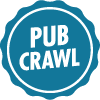
Proofing Like a Pro
Proofing is one of the last steps before any major writing milestone.
About to send a manuscript to your betas for feedback? Proof it first. Turning in a revision to your editor? Proof it again. Reading through your pass pages (aka "your last chance to make changes ever!!)? Proof it with extra care!
As writers, we read our own book hundreds (if not thousands) of times before it becomes a physical book. Because we are so close to the work, it is easy to skim right over missing words, auto-correct typos in our heads, and completely miss continuity errors. Over the years, I've relied on a few key proofing methods to help me catch these errors. The main trick they all have in common is getting away from the computer.
#1: PRINT IT
I can hear you already. Erin, think of the trees! So I'll say this: print back-to-back and recycle everything. But trust me, having your words on paper, in front of you, is incredibly different than reading your book on your computer screen. This route helps you catch issues you hadn't before, and you'll have plenty of room to jot down notes and edits in the margins. I swear that documenting these edits by hand makes a difference. You're able to focus your efforts on highlighting what's broken and suggesting fixes for later, as opposed to feeling pressure to fix errors immediately (which is my main struggle when I proof at the computer.)
This method is good for: Early revision stages, eg: before sending to CPs or betas. I find it most useful for spotting big picture issues like plot holes, character arc inconstancies, pacing flaws, world-building/info-dumps, and so on.
#2: SEND IT TO YOUR KINDLE
Or iPad. Or e-reader of choice. The key here is to read your book in a format that feels slightly more book-like. Holding an e-reader tricks your brain into thinking you're reading a published e-book. Being able to curl up on the couch while reading certainly doesn't hurt either. Suddenly you'll be spotting scene- and sentence-level errors you hadn't in your previous read-throughs. As you come across these mistakes, highlight them and/or add notes so that you can address them when you're back at the computer later
This method is good for: Later revision stages, eg: before sending a requested revision to your editor. As mentioned, I've found this great for scene- and sentence-level issues (word echoes, unconvincing dialog, unclear descriptions, and so on).
#3a: READ IT OUT LOUD
The down-side to this method is it takes a lot of time and often makes you lose your voice in the process. But I swear this is hands-down the best method for spotting typos. Your brain auto-corrects small issues when you read silently, but reading out loud forces you to focus on every last word. Typos, missing words, incorrect conjugations, wonky punctuation, and more will jump out at you. (I'm proofing my pass pages for Forged right now—a manuscript that has already been through professional copyediting—and have found at least four typos while reading aloud.) It's tough work, but worth it. Keep a glass of water nearby and take breaks often.
This method is good for: Final proofing, eg: before turning in your last round of pass pages. Because it's so rough on your vocal chords, I usually only do this method once per book, and put it off until my last possible chance to make edits.
#3b: HAVE THE COMPUTER READ IT TO YOU
Piggy-backing off the previous suggestion, there are programs out there that can read your manuscript to you. The goal is the same: hearing the words out loud will help you catch errors that previously slipped through so you can edit while you listen. I have yet to use this method, but might try it in the future. Writers have suggested different programs to me, such as Ivona Reader (for PC desktops) and Voice Dream Reader (for iPhone/iPad). If you know of and would like to recommend another, please leave it in the comments!
This method is good for: same as above.
And that's it! These are my go-to proofing methods for various stagings of revision. While these work for me, they may not work for everyone. On that note, I'm sure there are other methods that also work wonders. Do you have a proofing trick or tip that I didn't mention here? Please leave it in the comments!







